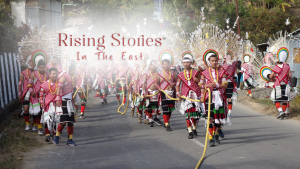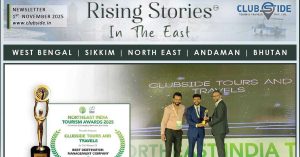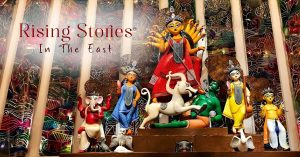Heading At A Glance (Click To View More)
NEWSLETTER DECEMBER 2019
As we all know that CHRISTMAS to a great extent is confined to the Christian community, the festival has also increasingly picked up a secular tinge in many parts of India, infused by people of all communities and religions. Kolkata is one city that celebratesChristmas with utmost fervour and liveliness. Beautifully decorated Christmas trees, cakes, carols and colourful lights exemplify the spirit of Christmas.

During its days of the British Raj, with the help of rigorous efforts of Christian missionaries, Kolkata is now home to a notably Bengali Christian population and Anglo-Indian community. Having said that, Christmas in Kolkata is not particularly a Christian affair. In 2010, the Chief Minister of West Bengal, Mamata Banerjee decided to liven up the celebrations to attract more attention and enhance tourism during the period. Now people from all backgrounds in Kolkata look forward to and gear up for the carnival.
Amid the huddled shops of New Market, an immeasurable queue of people clutter around the famous Jewish bakery, Nahoums to buy Christmas cakes for friends and families. The streets of Mirza Ghalib is glittered with knickknacks and Christmas decorations with Carols playing in the background. Park Street is a place you can’t miss on a Christmas Day. People are dressed and bundled up in fluffy wintry clothes andcome to explore the dazzling Park Street of Kolkata. Families line up outside some famous eateries and restaurants like the Fleury’s, Barbq, Peter Cat to name a few.
The charming hills of Darjeeling, Kalimpong and Kurseong that are tucked away in the northern part of West Bengal also come alive during the Christmas week. Blooming mistletoes and poinsettias reflect the spirit of Christmas reminding us of the delightful olden era that makes you want to fall in love with the place all over again. The entire place is adorned with glittering lights and embellishments with beautifully decorated Christmas trees in shops, cafes and restaurants. One can visit the famous St. Andrews Church in Darjeeling to enjoy nativity plays and Christmas carols & hymns performed by the youngsters and members of the church. Darjeeling is famous for its bakeries where fresh plum cakes, pies, puddings and a wide range of treats are served. You will most certainly be drawn by the aroma of freshly baked muffins and cakes in Glenery’s, one of the oldest and most popular bakeries in town. One can sit inside the restaurant enjoying the warmth of the fireplace or sit out on the open terrace relishing the quaint air of Darjeeling and enjoying the meal.
LOSOONG FESTIVAL is considered to be one of the most important festivals of Sikkim. It symbolises the commencement of the Sikkimese New Year and is celebrated with utmost joy and enthusiasm all across the region. It is one of the most significant festivals for the farmers as it overlaps with the end of the harvesting season.
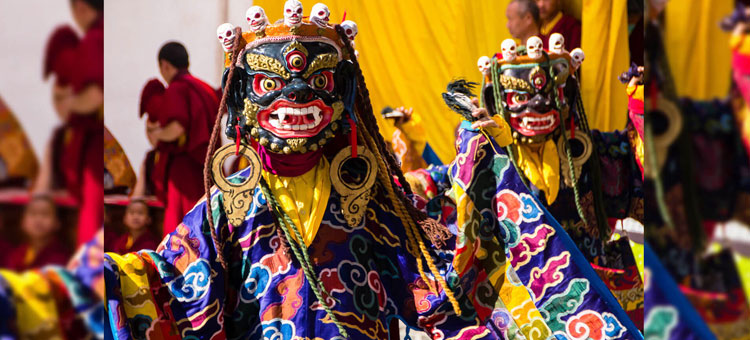
Originally Losoong festival was only celebrated amongst the Bhutia community, gradually it extended tothe Lepchas and now it is celebrated across other minor tribes of Sikkim and Darjeeling. The monasteries are decorated with lights, colourful prayer flags and festoons with monks gearing up for celebrations.
Losoong festival serves as a delightful retreat to the travellers seeking to experience the unique culture of Sikkim offering a unique display of traditional folk dances, religious rituals and ceremonies and a great chance to devour on the delectable Sikkimese cuisine.
The dates of Lossong festival are based on the Tibetan Lunar Calendar and typically falls on the 18th day of the 10th lunar month which is usually December. The festivities last for about 4 days with cultural events taking place in monasteries like Rumtek and Tsuklakhang Palace. This year the festival starts on 27th and ends on 31st of December 2019.
DESTINATION OF THE MONTH
MURSHIDABAD
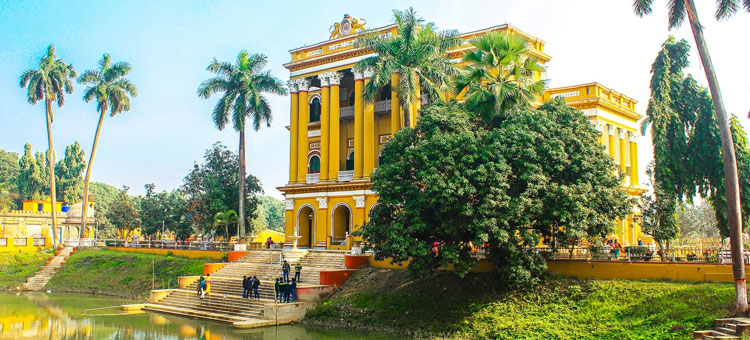
Murshidabad is a hidden gem, one with heritage structures that date back to Mughal and British eras. It inherits a legacy of richness both historically and culturally. The city that was once the capital of independent Bengal is set on the eastern bank of the Bhagirati river and has perceived some momentous events of Indian history comprising of the erstwhile Nawabs of Bengal to the Battle of Plassey. Many merchants were drawn to this region in the 1700s because of its wealth, opportunities and geographical significance. Consequently, Murshidabad witnessed the convergence of various cultures and then gave birth to its very own distinctive potpourri of ethnicity. Today Murshidabad is a semi-rural settlement that used to be a great city that matched the size and lavishness of London. The area also bears traces of ancient Jain settlements called the Sheherwali, with their blended culture, food and entrepreneurship.
The food of Murshidabad is a combination of Mughal influences and local culinary traditions. The royal cuisine of the Nawabs and the delicacies of Bengal have amalgamated over the centuries to a truly gorgeous heritage cuisine with amazing earthy flavours. The influence of the Mughals can be distinctly seen in the preparation of food in Murshidabad. The remarkable cuisine from a glorious era includes; Tikia, Jhal Tengra, Dal Chini Gosht, Dhuki Haser Gosht, Tok Murgi, Murgir Korma, Murshidabad Biryani and many more.
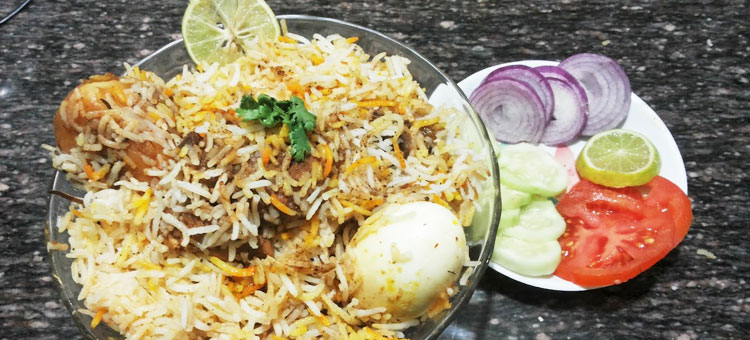
The 300-year-old Sheherwali cuisine cannot be missed as it is an indigenous experience of the royal vegetarian culinary delights of Murshidabad brought by the families of Sheherwali or the intrepid Oswal Jain community of traders, businessmen and bankers. Murshidabad being an important trading hub, the Sheherwalis brought in a lot of culinary influences to the culture of Bengal from Rajasthan. Flavours of food rich in ghee and bold spicy tastes that could survive in the tough climate of Rajasthan met the distinctive local flavours of Bengal and the royal cuisines of the Afghans and later the Mughals. Other than that, Murshidabad is the mango capital of West Bengal. Around 200 varieties of mangoes are produced here every year.
Murshidabad is also a centre for agriculture, handicrafts and sericulture. The famous Murshidabad Silk, much in demand for making saris and scarves, is produced here.
Murshidabad is an architectural delight and the structures and palaces were exceedingly influenced by the Roman and Greek designs and flair. The edifices of Murshidabad is embellished and maintained and displays its royalty and magnificence.
Some of the fascinating places to visit are
Jahan Kosha
Jahan Kosha,also known as “The Destroyer of the World” that displays a massive cannon built in 1637 during the reign of Shah Jahan weighs seven tonnes and now rests on a rectangular plinth in the artillery park called Topekhana. The 17-ft., long firearm is an impressive sight. The cannon offers tangible proof of the high level of metalwork during the Mughal era.
Moti-Jheel
Moti Jheel also called the “Perl Lake” is located just off the main Murshidabad-Berhampur Road. What really draws attention towards Moti Jheel, is that, it is compared with a crucial yet a dark history. Ghaseti Begum, the maternal aunt of Siraj-ud-Daulah resided in a palace constructed on the bank of the lake. When her nephew ascended the throne, she became jealous and thus paved the way for the British to enter the Indian soil. Her palace and the surrounding grounds became the centre for anti-Nawab meetings. Siraj-ud-Daulah marched to Plassey from Moti-Jheel, unaware of his commander-in-chief Mir Jafar’s deceitful plan of dethronement framed together by Ghaseti Begum and the British.
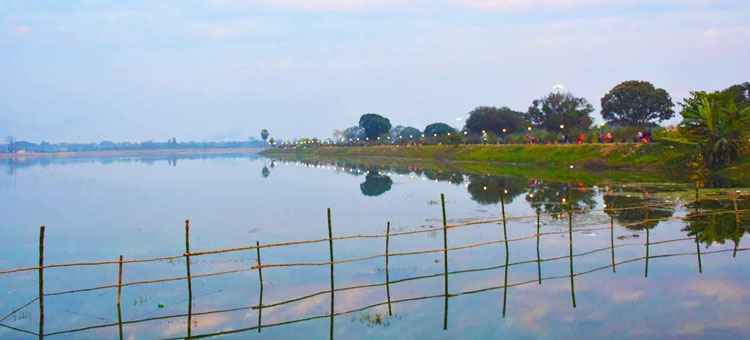 Today the only living structures here are Kala Masjid – the mosque of Nawajesh Muhammed (Ghaseti Begum’s husband), an arena of four tombs and a mysterious brick chamber with no doors or windows.
Today the only living structures here are Kala Masjid – the mosque of Nawajesh Muhammed (Ghaseti Begum’s husband), an arena of four tombs and a mysterious brick chamber with no doors or windows.
Katra Masjid
The founder of Murshidabad, Nawab Murshid Quli Khan, Aurangazeb’s most preferred general, had built Katra Masjid in 1723. With its striking towers, coves and anenormous courtyard, this ancient Islamic structure was constructed within a year. Some of its domes disintegrated during the 1897 earthquake, but Katra Masjid is still a marvel to witness. The highlight of the mosque is the two surviving 70-ft-high tapered minars that soar over everything else.It is however difficult to climb up the spiral staircases inside the minars but the 25-ft diameter of the structures will give you an idea of their scale. The size of the mosque will make you admire the architectural expertise of Murshidabad’s architects and masons.
Fauti Masjid
Fauti Masjid is a place filled with history and intrigue. Creepers have slithered into the very foundation of the unfinished mosque and the only way to enter is by means of a path at the side of the road. Once you approach the interiors of this partial structure, the sunshine, through the incomplete domes and basalt doorways elucidate the dilapidated inner walls. The four domes on either end are just about in ruins and only one spiral staircase remains. The staircase takes you to the top of the structure from where you will be treated to spectacular views of Murshidabad. They say that Fauti Masjid maynot persistfor too long as the forest stakes its claim and shrubbery has absorbed this structurefrom the mid-1700s.
House of Jagat Seth
Murshidabad is a goldmine of history and to explore the city is particularly very intriguing. Every monument and structure radiateantiquity and so does the house of Jagat Seth which is now converted into a museum. Jagat Seth, when directly translated means “the banker of the world”, was the title conferred upon the wealthy Chand family who functioned as bankers and financiers to the Nawabs. This financialassociation was quite edgy under Siraj-ud-Daulah and eventually led to the Seth family working against the Nawab with Mir Jafar and the British.
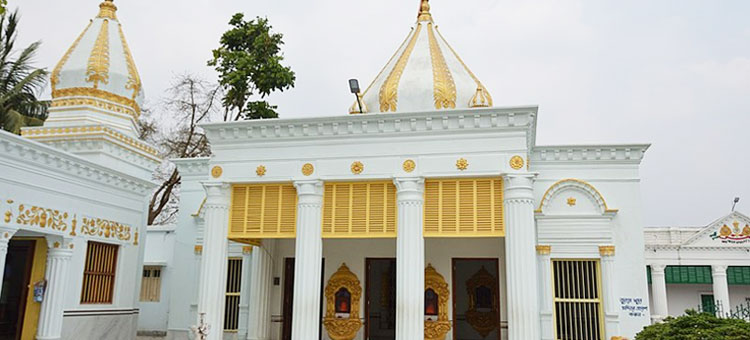 The house of Jagat Seth is an absolute treasure for history enthusiasts, thanks to the number of artefacts on display. Besides the ancient coins, cannons, furniture and utensils, the highlight of the tour is when you get to discover the secret underground tunnels that were used as escape routes. The marble statues and Romanesque pillars enhances its charm. The family’s well-maintained possessions transport you to a time of immeasurable splendour and wealth.
The house of Jagat Seth is an absolute treasure for history enthusiasts, thanks to the number of artefacts on display. Besides the ancient coins, cannons, furniture and utensils, the highlight of the tour is when you get to discover the secret underground tunnels that were used as escape routes. The marble statues and Romanesque pillars enhances its charm. The family’s well-maintained possessions transport you to a time of immeasurable splendour and wealth.
Kathgola Gardens
The Kathgola Gardens are owned and preserved by the descendants of the Jagat Seth family and is an enormous complex of orchards, pleasure gardens, pavilions, marble statues, crazy-China paved walkways and gazebos, complete with several ornamental bathing tanks, a tunnel and a Jain temple.
The four storeyed palace is historically noteworthy, as it was the meeting place for a number of wealthy noblemen during Murshidabad’s golden age. This mansion has a marble statue of Michelangelo in the courtyard and a baoli (stepwell) that served the irrigation channels for the surrounding gardens.
On the southeast lies The Zenana Mahal and further along is the Adinath Temple that is notable because of its European-style façade with traditional Jain interiors.
Nashipur Palace
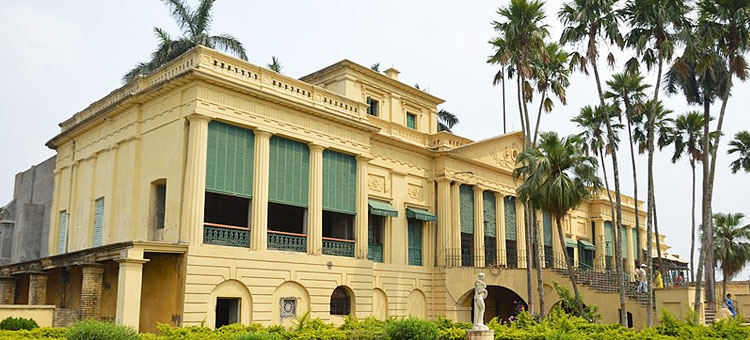 Built in the mid-19th century, Nashipur Palace is dotted with tall palm trees within its premises. A grand staircase leads up to a two-storeyed mansion with massive pillars and high ceilings. The walls are adorned with portraits of former zamindars in addition to other items from that period. A little further away from building is the Nashipur Akhara that has a small collection of utensils and sculptures and is the centre for the Jhulan Yatra that takes place every year.
Built in the mid-19th century, Nashipur Palace is dotted with tall palm trees within its premises. A grand staircase leads up to a two-storeyed mansion with massive pillars and high ceilings. The walls are adorned with portraits of former zamindars in addition to other items from that period. A little further away from building is the Nashipur Akhara that has a small collection of utensils and sculptures and is the centre for the Jhulan Yatra that takes place every year.
Hazarduari Palace
The Mansion with a Thousand Doors also doubles up as a museum and is indeed the highlight of Murshidabad.
Located near the banks of Bhagirathi, this beautiful palace was designed by General Duncan Macleod and is constructed in Italian marble. The wide flight of stairs leading up to the palace’s entrance, the two Victorian stone lions on either side of the stair case and massive pillars supporting the pediment reflects the Indo-European architectural style.
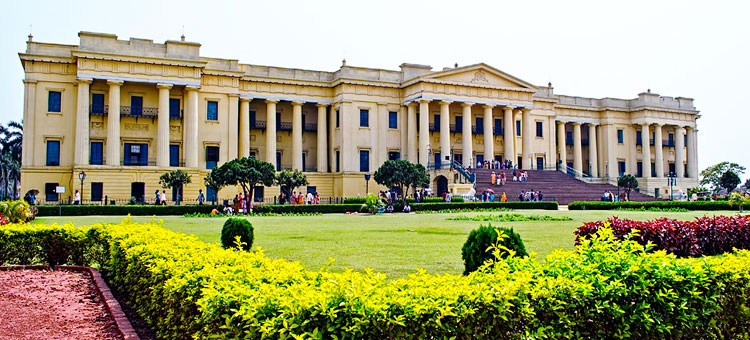
Ranging over three floors, Hazarduari has around 120 rooms and eight long galleries. The pink stucco walls are patterned in floral designs and lined with endless rows of oil portraits of Nawabs and East India Company officials.
The armoury extensionholds ahuge collection of artilleries from the 18th and 19th centuries. The weapons that are displayed here comprise of the dagger that was used to stab Siraj-ud-Daulah and Alivardi Khan’s sword and multi-barrelled rifle along with the cannon used in the Battle of Plassey. There is a row after row of guns, ammunition and light artillery weapons used by British and Indian soldiers of the era. The Nawab Nazim Gallery contains portraits of the rulers of Murshidabad. The focal point of attraction here is the Durbar Hall with its sparkling chandelier, silver throne and massive candle stands.
- There are no direct flights going to Murshidabad. However, one can fly to Kolkata and then drive to Murshidabad which will take about 5-6 hours.
- Distance by Road is 202 kms between Kolkata and Berhampur Murshidabad. A straight drive down the well-serviced NH-12 takes you through Berhampur Court Station and Malda and then finally to Murshidabad.
- Best time to visit Murshidabad is during October to March
DESTINATION OF THE MONTH
BARI KOTHI
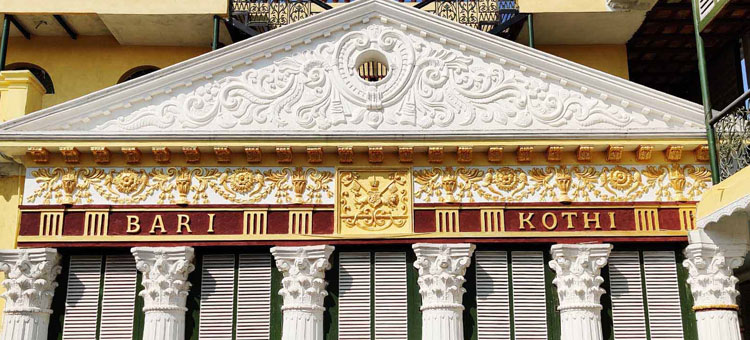 Bari Kothi is a 300-year-old heritage hotel in Murshidabad. This restored family house reflects the atmosphere of a royal Sheherwali culture. Bari Kothi is a luxury boutique heritage hotel that showcases the Greek, Roman and French architecture. This beautiful structure was abandoned for decades and the restoration work of this heritage home began in the year 2016. From restoring beams made of teak wood to working on the old-fashioned furniture, the architect paid a lot of attention to its details, enough so that the home would last another century or more.
Bari Kothi is a 300-year-old heritage hotel in Murshidabad. This restored family house reflects the atmosphere of a royal Sheherwali culture. Bari Kothi is a luxury boutique heritage hotel that showcases the Greek, Roman and French architecture. This beautiful structure was abandoned for decades and the restoration work of this heritage home began in the year 2016. From restoring beams made of teak wood to working on the old-fashioned furniture, the architect paid a lot of attention to its details, enough so that the home would last another century or more.
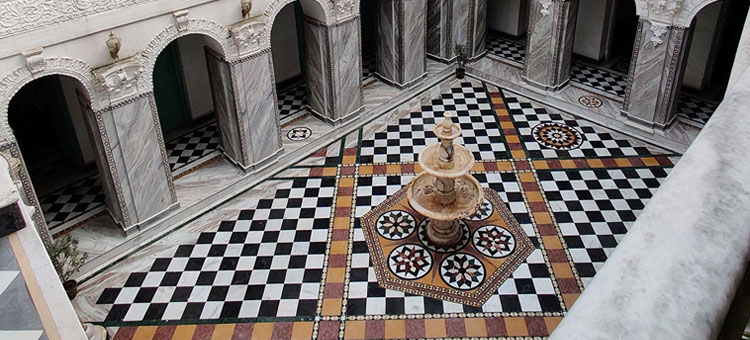 Bari Kothi has 15 beautifully set-up Suites, each having their distinctive character that tells a story. All of them are adorned with vintage furniture and modern amenities including free Wi-Fi.
Bari Kothi has 15 beautifully set-up Suites, each having their distinctive character that tells a story. All of them are adorned with vintage furniture and modern amenities including free Wi-Fi.
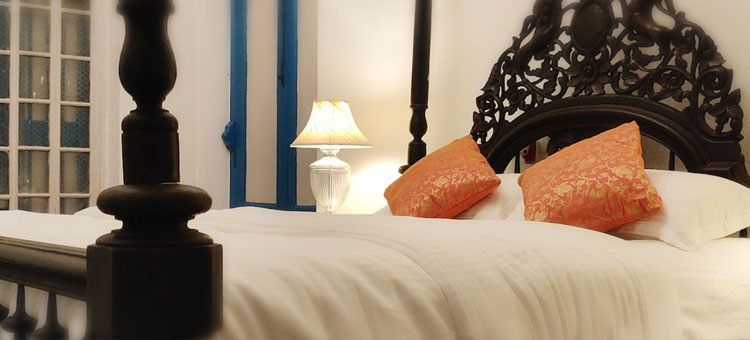
It was in the early 18th century that a group affluent Oswal Jain (Sheherwali) merchants from the small towns of Rajasthan who were bankers and businessmen, migrated to Murshidabad in search of business prospects. Today, Sheherwali community has flourished across Murshidabad and are known for their unique way of life.
The lifestyle of these merchants reflects a blend of the princely traditions of Rajasthan and the culture of Bengal. An extravagant lifestyle directed them to enjoy the finer things of life such as art, jewellery, clothes, gardens, furniture and libraries. They are renowned for the love and preference for the huge variety of mangoes of Murshidabad.
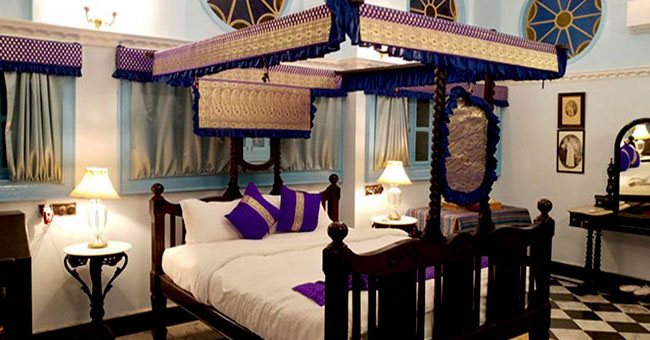
They say, “The love for food, especially all things sweet, is an accurate label for any Sheherwali.” They give a great measure of emphasis on food and is a prominent feature in this community, which has been passionately evolving through their 300 year history in Bengal. Sheherwali cuisine is the finest vegetarian spread one can find, even in modern times, and is a wonderful blend of the cuisines of the west and the east of India. Their remarkable cuisine is the melting pot of various cultures.


